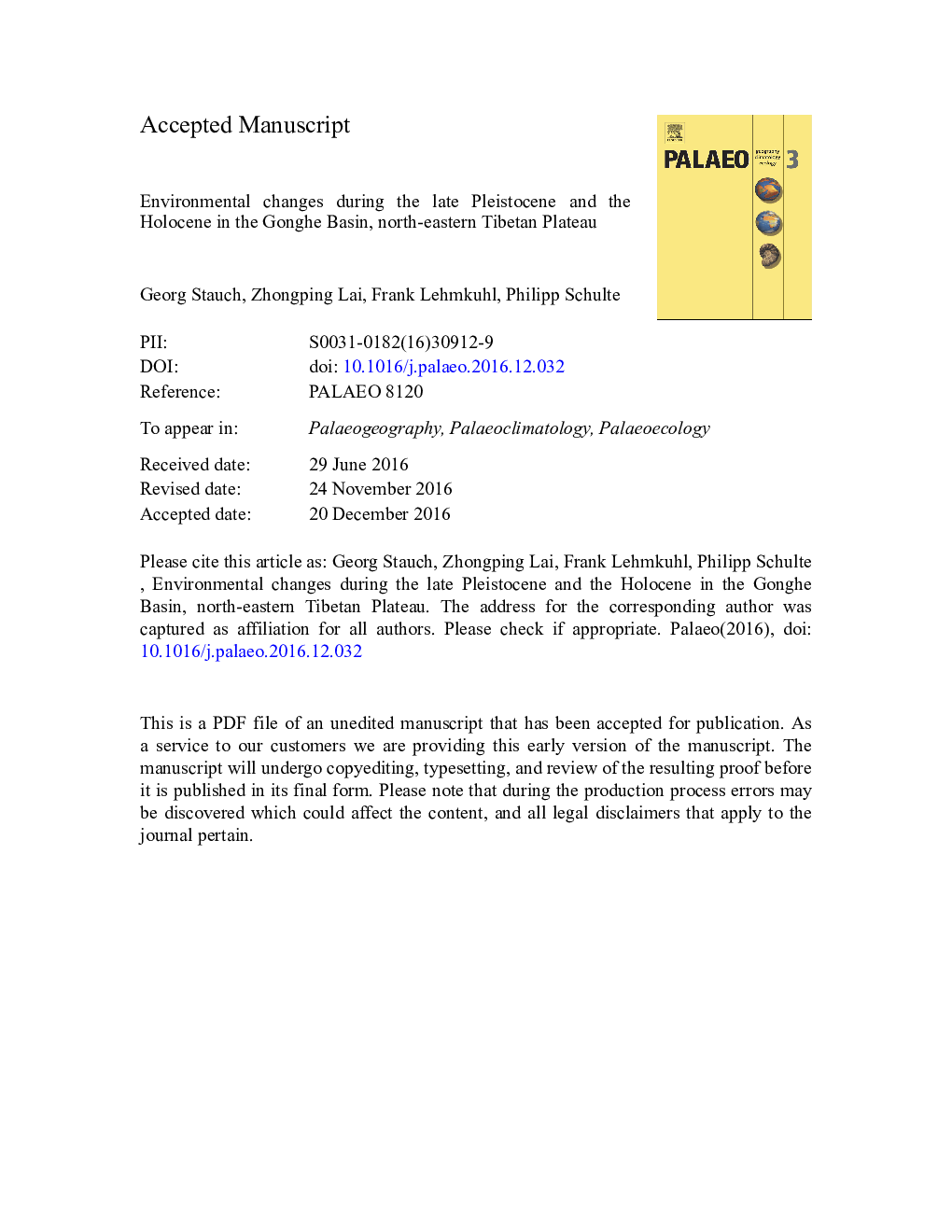| کد مقاله | کد نشریه | سال انتشار | مقاله انگلیسی | نسخه تمام متن |
|---|---|---|---|---|
| 10223635 | 1701039 | 2018 | 43 صفحه PDF | دانلود رایگان |
عنوان انگلیسی مقاله ISI
Environmental changes during the late Pleistocene and the Holocene in the Gonghe Basin, north-eastern Tibetan Plateau
دانلود مقاله + سفارش ترجمه
دانلود مقاله ISI انگلیسی
رایگان برای ایرانیان
کلمات کلیدی
موضوعات مرتبط
مهندسی و علوم پایه
علوم زمین و سیارات
فرآیندهای سطح زمین
پیش نمایش صفحه اول مقاله

چکیده انگلیسی
Different types of aeolian sediments are widespread in Gonghe Basin on the north-eastern Tibetan Plateau. Despite that individual sections are often discontinuous, the analysis of a large number of individual sections distributed in the entire basin provides a valuable archive for the reconstruction of environmental changes since the late Pleistocene. This study presents 43 new OSL (optical stimulated luminescence) ages and combines them with 39 previously published ages from the Gonghe Basin for the last 16Â ka. From around 15 to 14Â ka onwards an increase in moisture facilitated the formation of a vegetation cover and the fixation of loess sediments on the northern and southern side of the basin. After enhanced mobility of aeolian sediments during the dry Younger Dryas greater than before precipitation fixated also the sands in the lower parts of the basin. The increase in moisture can be attributed to the strengthening of the Asian summer monsoon. A comparison with the timing of aeolian sediment accumulation in the neighbouring basins probably indicates a time-transgressive strengthening of the monsoon on the north-eastern Tibetan Plateau. Aeolian sands were first permanently stored from around 17Â ka at the Qinghai Lake in the north-east of the area and at 10.5Â ka at the Donggi Cona in the south-west. The Gonghe Basin is located in an intermediate position. Highest moisture values occurred during the mid-Holocene from around 7.5 until probably 2.5Â ka in the Gonghe Basin. In most parts of the basin aeolian activity was low during this time. In the central part of the basin aeolian sand movement occurred sporadically. Since 2.5Â ka aeolian activity in most parts of the basin resumed due to the late Holocene weakening of the Asian summer monsoon. However, the parallel accumulation of aeolian sands and silts indicates an increased human influence.
ناشر
Database: Elsevier - ScienceDirect (ساینس دایرکت)
Journal: Palaeogeography, Palaeoclimatology, Palaeoecology - Volume 509, 15 November 2018, Pages 144-155
Journal: Palaeogeography, Palaeoclimatology, Palaeoecology - Volume 509, 15 November 2018, Pages 144-155
نویسندگان
Georg Stauch, Zhongping Lai, Frank Lehmkuhl, Philipp Schulte,